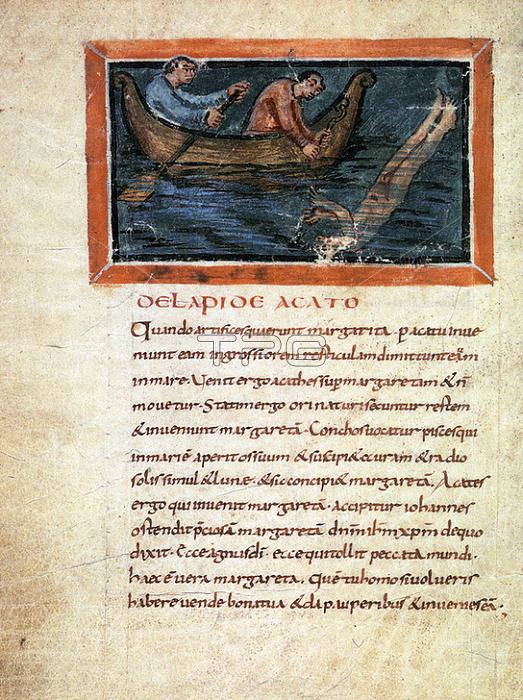
The 'Bern Physiologus' is a 9th century illuminated copy of the Latin translation of the Physiologus. It was probably produced at Reims in France about 825-850. It is believed to be a copy of a 5th century manuscript. Many of its miniatures are set; unframed; into the text block; which was a characteristic of late-antique manuscripts. It is one of the oldest extant illustrated copies of the Physiologus.
The Physiologus is a didactic text written or compiled in Greek by an unknown author; in Alexandria; its composition has been traditionally dated to the 2nd century CE by readers who saw parallels with writings of Clement of Alexandria; who is asserted to have known the text. The Physiologus consists of descriptions of animals; birds; and fantastic creatures; sometimes stones and plants; provided with moral content. Each animal is described; and an anecdote follows; from which the moral and symbolic qualities of the animal are derived. Manuscripts are often; but not always; given illustrations; often lavish.
The book was translated into Latin in about 700; and into Ethiopic and Syriac; then into many European and Middle-Eastern languages; and many illuminated manuscript copies such as the Bern Physiologus survive. It retained its influence over ideas of the 'meaning' of animals in Europe for over a thousand years. It was a predecessor of bestiaries (books of beasts). Medieval poetical literature is full of allusions that can be traced to the Physiologus tradition; the text also exerted great influence on the symbolism of medieval ecclesiastical art: symbols like those of the phoenix rising from its ashes and the pelican feeding her young with her own blood are still well-known.
| px | px | dpi | = | cm | x | cm | = | MB |
Details
Creative#:
TOP20148923
Source:
達志影像
Authorization Type:
RM
Release Information:
須由TPG 完整授權
Model Release:
No
Property Release:
No
Right to Privacy:
No
Same folder images:

 Loading
Loading